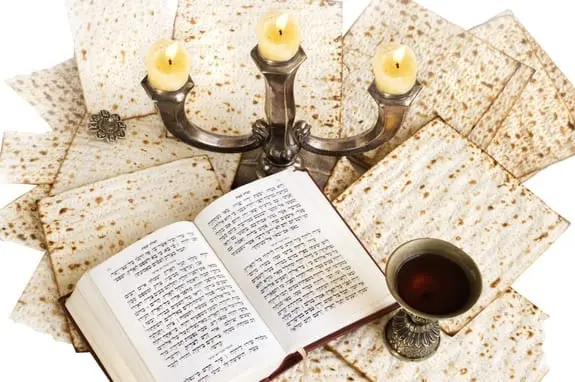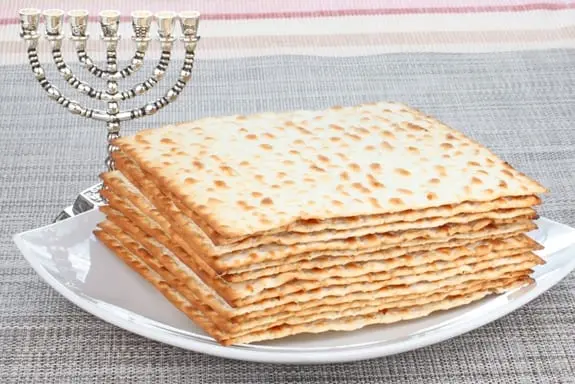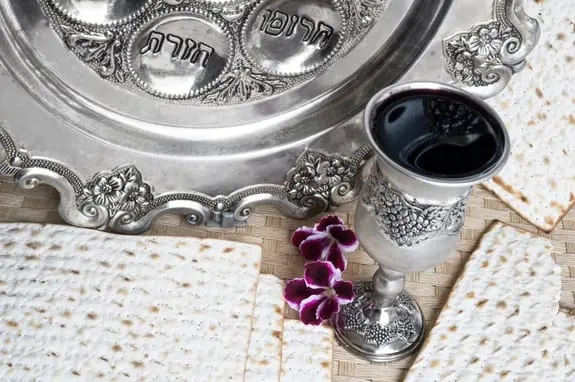April 15 according to the Gregorian calendar (15 Nisan according to the Jewish lunar calendar) the most important holiday for Jews begins – Passover. According to tradition, in Israel, the festivities will continue for seven days, in the countries of the diaspora-for eight.

Sacred Bread
The oldest holiday of the Jewish people is associated with a key moment in their history – the exodus from Egypt and the long-awaited painful finding of freedom. In biblical times, the celebrations were always accompanied by a pilgrimage to the temple, sacred sacrifices, and a special feast with the eating of the Passover lamb.
Many of the rituals and customs detailed in the Torah have migrated to the present day. So, throughout Passover, it is strictly forbidden to eat leavened food, or chametz-products that have undergone fermentation (bread, pasta, sweet pastries on yeast dough). The rule also applies to beer and other yeast drinks. The ban is connected with the legend that on the eve of the Great Exodus, the Jews did not have time to leaven the dough and let it rise, and therefore in a hurry baked unleavened cakes made of wheat flour for the road. And those tortillas are now known all over the world as matzah.
It is this bread that is always present on the tables during the festival. The most strict adherents of traditions remind us that the dough for matzo is kneaded with only two components-flour and water, excluding even salt. It is allowed to prepare the dough from flour of five varieties: wheat, oats, barley, spelt and rye. And the cooking process itself should not exceed 18 minutes from the moment of mixing water with flour, since this is the minimum period of time for which the dough has time to ferment. For the same purpose, the water for the test is prepared in advance so that it takes the optimal temperature.

Main Meal Menu
The key point of Passover is the seder, a meal that is served on the first evening of the holiday. At the table, relatives and friends gather, the Haggadah (the story of the Exodus) is read in the usual order, and special dishes are eaten.
The center of the table is traditionally decorated with a ritual silver kear dish with six cells. Each of them contains food that has a sacred meaning. Maror, or bitter green-crushed horseradish with various herbs-symbolizes bitter suffering. When eating greens, it is customary to dip them in salt water as a sign of the tears shed by the Jews during slavery and many years of wandering. A mixture of apple pulp, dates and nuts, called haroset, looks like clay. This is a kind of reminder of the bleak days when, under the yoke of Egyptian slavery, the Jews baked bricks.
On the silver platter, there are necessarily three more dishes-symbols that are not accepted to eat. This is a piece of roasted lamb with a zroa bone, which represents a redemptive sacrifice, karpas – any spring vegetable, as well as a hard-boiled egg, beitsa, which reminds of the unity of the Jewish people. The main dish, without a doubt, is matzo-a symbol of finding freedom and great joy.
Many other dishes are prepared for the festive feast: salad of eggs and herbs, chicken broth with dumplings, roast duck or chicken, baked meat, stuffed fish.
Of course, no meal is complete without wine. At a festive dinner, it is customary to drink four glasses of red wine, equal to the four promises of the Lord to the people of Israel: to bring them out of Egypt, to deliver them from suffering, to save them and to accept them. The special fifth glass of wine remains untouched and is intended for the Prophet Elijah (Elijah), who must return to earth with the news of the”great and terrible day of the Lord”.

Festive delight
The traditional feast of Passover does not happen without desserts. Simple and quick to prepare, they are very tasty and colorful. And as usual, a rare treat is prepared without the participation of matzo.
The ideal option for a festive feast may well be a chocolate cake with nuts. For its preparation, matzo flour is mixed with eggs, sugar, ground walnuts and a few spoons of cocoa powder. Last of all, finely chopped apples are added. And to make the cake more juicy, you can pre-boil the apples slightly. The dough is carefully poured into the mold and baked in the oven for 40 minutes. Decorate the cake at your discretion – whipped cream, grated chocolate or powdered sugar.
Some housewives prepare air macaroons from whipped egg white with the addition of ground almonds. From the resulting mass, neat cookies are formed on a baking sheet with oiled paper. In the oven, they spend no more than 20 minutes, after which they are sprinkled with powder, sent to the guests.
A simple, but much-loved dessert, babka, is a frequent guest on the festive table in the days of Passover. The preparation begins with the fact that several sheets of matzo are soaked in a bowl of milk. Meanwhile, carefully beat the eggs with sugar and a pinch of vanilla. Then the contents of both bowls are combined and the resulting mixture is sent to the pan. The tortilla is fried on both sides, allowed to cool and cut into large triangles.
Passover is not only a sacred holiday with ancient traditions and symbolic meaning, but also a great occasion to gather at the same table with close friends, sharing the joy of communication and warmth. We sincerely congratulate you on Passover! Health, happiness and well-being to your families.









